Abundance: rare
What: young shoots, young leaves
How: shoots cooked, leaves raw or cooked
Where: sunny fields
When: spring
Nutritional Value: vitamins, flavanoids, phytochemicals
Dangers: very thorny
Devil's Walking Stick trees are small, only growing about 30' tall.
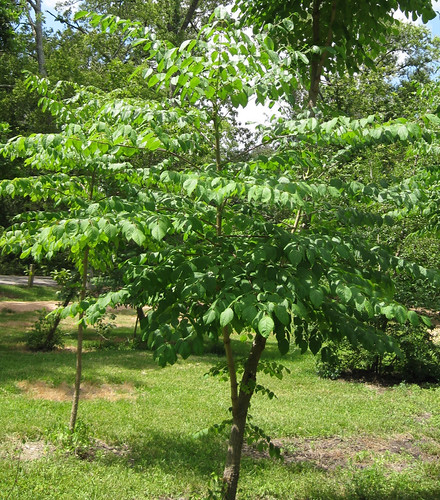
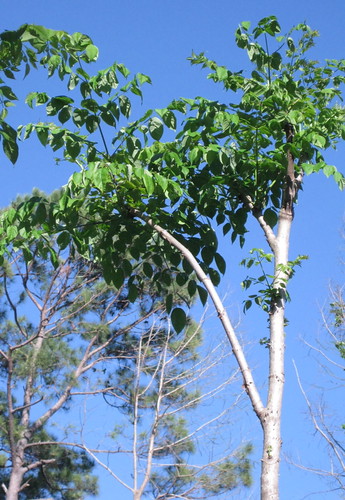
Close-up of spines on young tree (found on trunk and branches). Note how the thorns grow in rings around the wood.
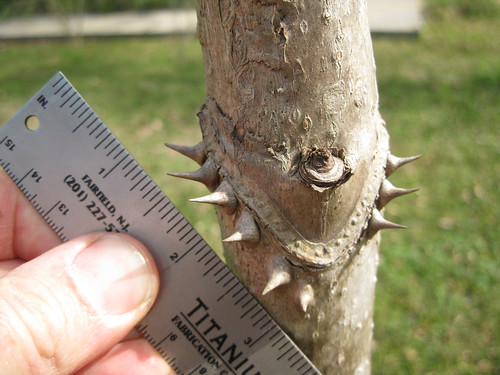
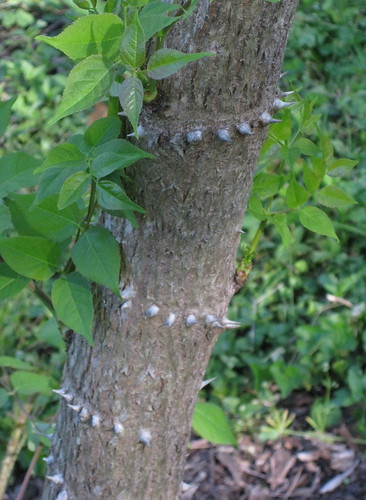
Leaves have a compound opposite layout.
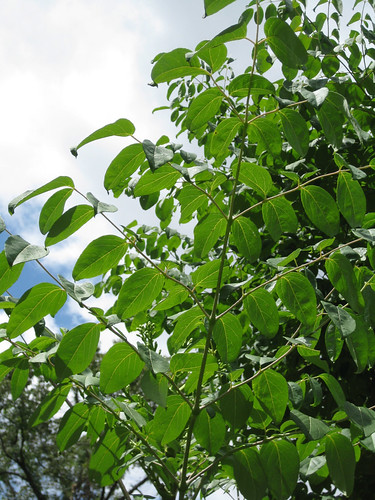
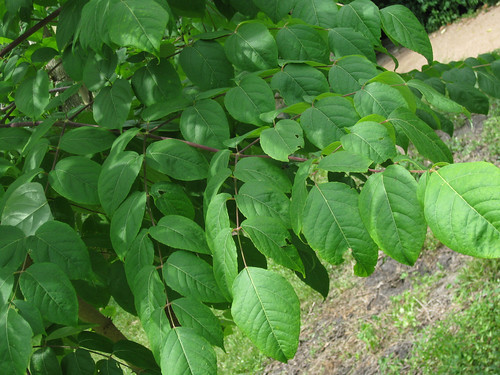
Close-up of a single leaflet.
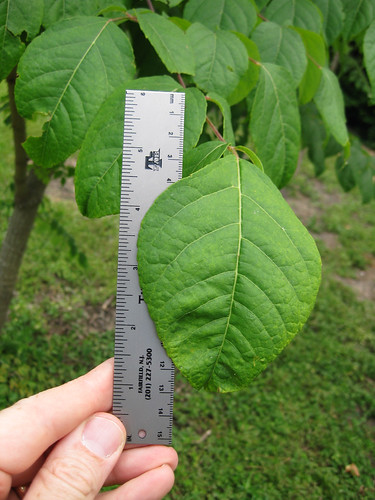
New leaves sprouting in late winter. This is a good time to harvest the new shoots for cooking.
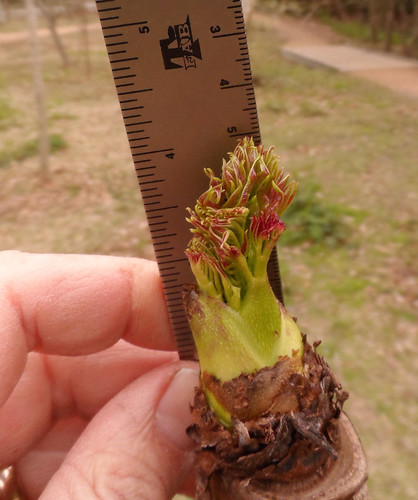
Young leaves two months later, ready to be cooked.
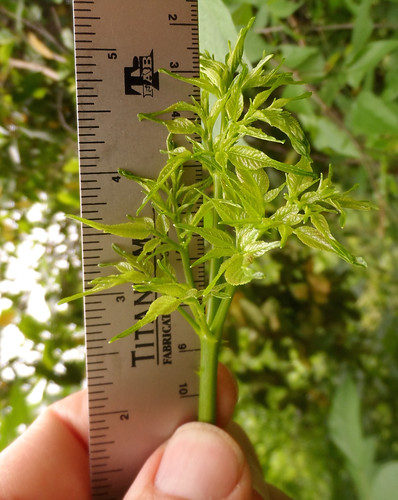
Young leaves in the spring.
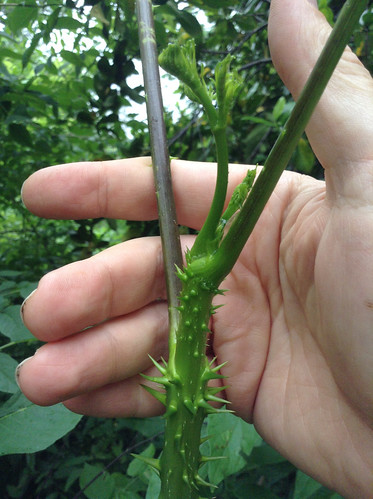

New growth is a lovely green color while the previous years' growth is gray.
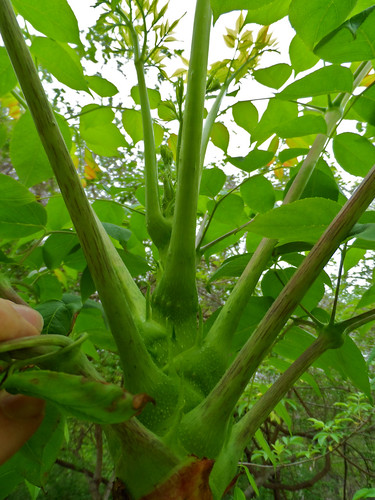
In late summer Devil's Walking Stick trees produce tons of small, yellowish blooms.
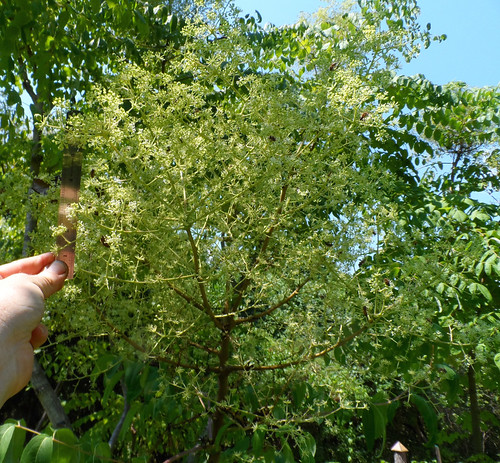
Close-up of blooms.
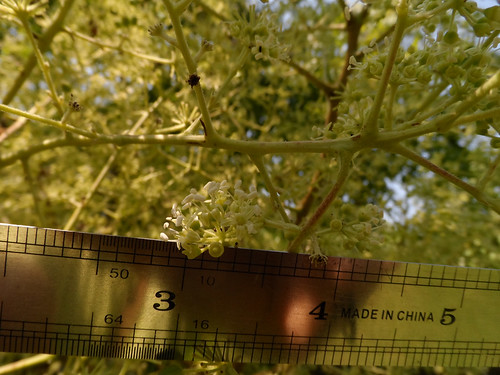
Unripe fruit photographed in August in Houston. Ripe fruit is red but NOT edible.
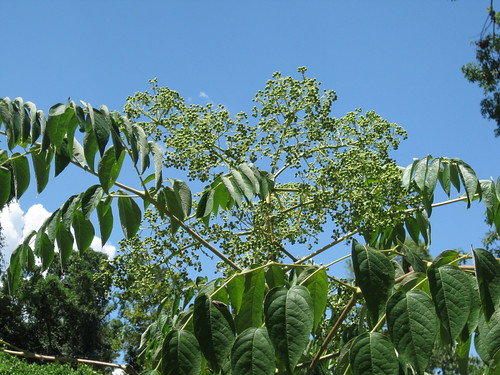
Close-up of the unripe berries.
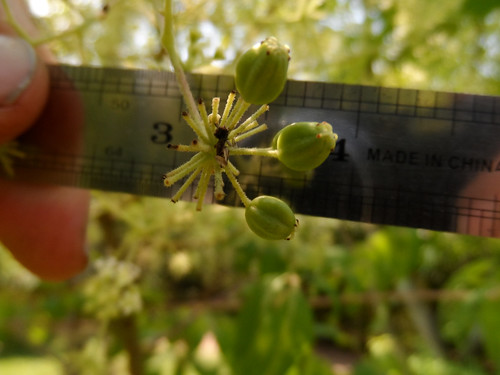
Texas distribution, attributed to U. S. Department of Agriculture. The marked counties are guidelines only. Plants may appear in other counties, especially if used in landscaping.

North American distribution, attributed to U. S. Department of Agriculture.
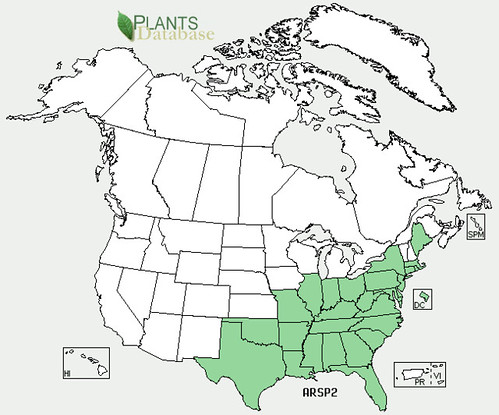
Throughout central, southern and eastern United States you may encounter the spiny/thorny Devil's Walking Stick tree in sunny fields, along woodland borders, or along the woodland paths. Some may mistake this tree for the Toothache Tree (Zanthoxylum species) but that tree's thorns are randomly placed and quite thick on mature Toothache Trees whereas the Devil's Walking Stick thorns remain small (though wicked sharp!) and form rings around the trunk and branches.
The new shoots and young leaves of the Devil's Walking Stick tree can be eaten in the spring before the spines on the leaf stems stiffen. The shoots make a good celery substitute when cooked. The young leaves can be eaten raw but the usual method of preparation is to finely chop the leaves then cook. The non-edible berries form in large clusters, starting out green in mid-summer and then turn red around September. Deer love eating any of the berries they can reach.
Buy my book! Outdoor Adventure Guides Foraging covers 70 of North America's tastiest and easy to find wild edibles shown with the same big pictures as here on the Foraging Texas website.

